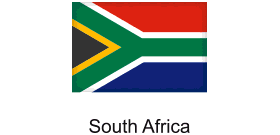Weather Warning! La Niña Threatens Southern Africa Travel: Brace for Flight and Hotel Havoc!

The South African Weather Service (SAWS) has issued its Seasonal Climate Watch for October 2025 through February 2026, providing crucial insights into the anticipated weather patterns. This outlook is particularly significant for Sub-Saharan Africa's travel and hospitality industries, signaling potential shifts that could influence everything from flight schedules and guest experiences to agricultural tours and water-based activities.
Current climate data indicates that the El Niño–Southern Oscillation (ENSO) is in a neutral phase. However, recent cooling in the Pacific suggests a rapid transition, with forecast models increasingly confident in predicting the emergence of at least a weak La Niña event during the high summer season. This shift marks the conclusion of the typical period of ENSO uncertainty, which extends from winter into early spring, when climate predictions are often less reliable. As model confidence solidifies, it becomes clearer that La Niña will likely dominate South Africa’s weather in the coming months.
The implications of a La Niña event are significant for the wider region. Historically, La Niña conditions lead to above-normal rainfall across the northeastern parts of South Africa. These areas, which encompass some of the nation's most vital agricultural zones and tourism corridors, are expected to experience wetter conditions from late spring into mid-summer. For African travel professionals, this means destinations such as the Limpopo and Mpumalanga provinces—renowned for their safari lodges, game reserves, and nature-based experiences—could benefit from lush landscapes and enhanced wildlife viewing due to increased water availability. However, the forecast also includes localized projections indicating the possibility of below-normal rainfall for specific areas within Mpumalanga and Limpopo, underscoring the need for continuous monitoring and preparedness for regional variability.
Beyond rainfall, the SAWS forecast highlights a general trend toward warmer-than-average minimum and maximum temperatures across most of South Africa during the late spring and summer months. The primary exception is the southwestern coastal belt, where maximum temperatures might slightly dip below average. This temperature outlook suggests that while most of the country will enjoy balmy weather, potentially increasing demand for air conditioning, poolside amenities, and water-based excursions, the Western Cape’s milder summer could attract visitors seeking a more temperate escape.
These evolving climate trends have direct and indirect consequences for the travel industry across Southern Africa. Airlines may need to anticipate increased demand for travel to and from rain-refreshed safari destinations, while ground transport providers might face road disruptions due to heavier rainfall. For hotels and lodges, abundant summer rains offer marketing opportunities tied to natural beauty, but also necessitate robust water management strategies and clear guest communications regarding changing weather. Agricultural tourism operators, including farm stays and wine routes, will need to closely follow the forecast, as above-average rainfall can rejuvenate crops but also bring challenges such as muddy access roads or scheduling adjustments for outdoor activities. Conversely, destinations reliant on water-based recreation, like river safaris or fishing tours, may benefit from higher water levels, though safety and contingency planning during intense precipitation will be crucial.
The forecast also emphasizes the increasing importance of climate resilience and adaptability for Africa's travel sector. The anticipated La Niña event serves as a reminder that successful operators must be prepared to adjust itineraries, update guest communications, and collaborate with local communities to ensure both safety and exceptional experiences. Investing in staff training, infrastructure maintenance, and climate-smart marketing now will position businesses to capture demand and build guest loyalty irrespective of weather conditions. Travel companies and accommodation providers should strategically leverage these seasonal shifts, promoting the verdant beauty of parks during the green season, offering weather-proofed experiences, and providing real-time updates on travel conditions. Collaboration with local tourism boards, meteorological services, and conservation agencies will enable the industry to disseminate accurate information and manage visitor expectations effectively.
As Sub-Saharan Africa continues to attract a growing number of regional and international travelers, a nuanced understanding of climate trends is vital for maximizing guest satisfaction and operational efficiency. The transition to La Niña, bringing the promise of abundant rain in the northeast and warmer conditions elsewhere, presents both opportunities and challenges. For those willing to adapt, it can be a catalyst for innovation in product offerings, infrastructure planning, and destination marketing. Staying informed through regular updates from the South African Weather Service and other authoritative sources will empower the region's travel sector to remain ahead of the curve, ensuring its continued prosperity regardless of the season.
You may also like...
Legacy Continues: Football Royalty's Son Nets Stunning Screamer for Barcelona Youth

Shane Kluivert, son of Dutch football legend Patrick Kluivert, scored a spectacular 'screamer' for Barcelona's Under-19s...
WNBA Star's Terrifying Health Ordeal: Mitchell Reveals Rhabdomyolysis Left Her Paralyzed

Indiana Fever All-Star guard Kelsey Mitchell revealed she suffered from Rhabdomyolysis during a WNBA semifinal game, cau...
Warner Bros' Box Office Bubble Bursts, But Industry Shrugs: What Does It Mean?

Paul Thomas Anderson's "One Battle After Another" marks a different kind of success for Warner Bros., earning critical a...
DCU's Nightmare: Are Film Franchises Repeating MCU's Fatal Flaws?

The DCU's increasing interconnectivity, particularly in <i>Peacemaker</i> Season 2, is raising concerns about potential ...
Killer Mike's Fiery Apology: Wife's Outrage After GloRilla Comparison to Ayesha Curry!

Killer Mike has publicly apologized to Steph and Ayesha Curry for comments he made reacting to a TikTok video that ridic...
Rod Stewart's Candid Confession: Penny Lancaster Shares His Top Appearance Gripe

There is absolutely no rift between Penny and I and no disagreement over where we should reside, in fact it's the opposi...
Local Outcry: Cambuslang Jobcentre Closure Sparks Political Condemnation

South Lanarkshire Council has unanimously condemned the UK Government's decision to close the Cambuslang Jobcentre, citi...
Wunmi Adelusi's Life-Defining Moment: The Event That Still Echoes

Discover the profound and lasting impact of intentional meeting attendance beyond mere networking. This article explores...




